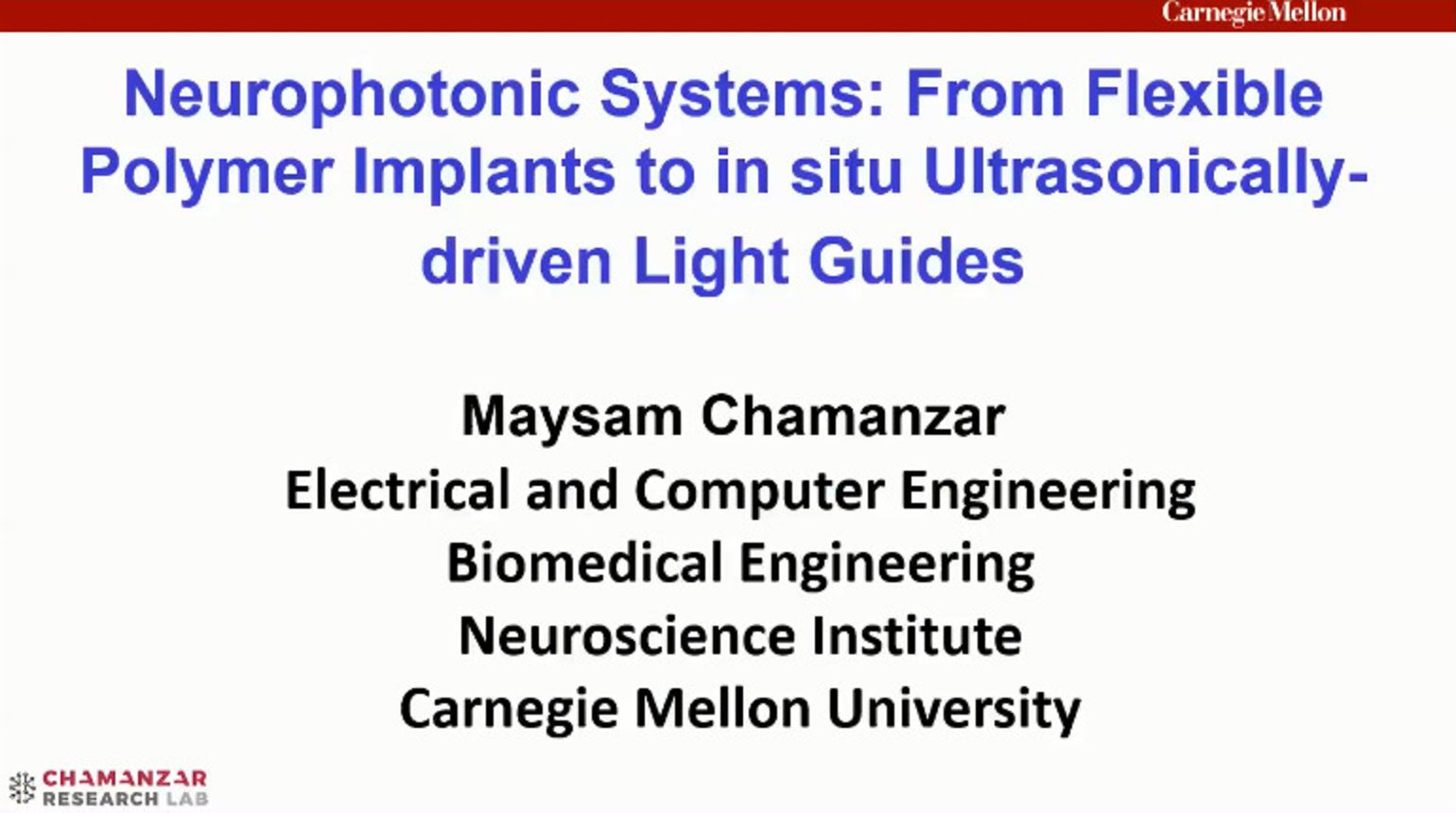
Already purchased this program?
Login to View
This video program is a part of the Premium package:
IEEE Brain: Neurophotonic Systems: From Flexible Polymer Implants to in situ Ultrasonically-driven Light Guides
- IEEE MemberUS $10.00
- Society MemberUS $0.00
- IEEE Student MemberUS $10.00
- Non-IEEE MemberUS $20.00
IEEE Brain: Neurophotonic Systems: From Flexible Polymer Implants to in situ Ultrasonically-driven Light Guides
Understanding the neural basis of brain function and dysfunction may inform the design of effective therapeutic interventions for brain disorders and mental illnesses. Optical techniques have been recently developed for structural and functional imaging as well as targeted stimulation of neural circuits. One of the challenges of optical modality is light delivery deep into the brain tissue in a non-invasive or at least minimally invasive way. Scattering and absorption prevents deep penetration of light in tissue and limits light-based methods to superficial layers of the tissue. To overcome this challenge, implantable photonic waveguides such as optical fibers or graded-index (GRIN) lenses have been used to deliver light into the tissue or collect photons for imaging. Existing large and rigid optical waveguides cause damage to the brain tissue and vasculature. In this talk, Dr. Maysam Chamanzar will discuss his research on developing next generation optical neural interfaces. First, Dr. Chamanzar will introduce a novel compact flexible photonic platform based on biocompatible polymers, Parylene C and PDMS, and GaN active light sources for optogenetic stimulation of neural circuits with high spatiotemporal resolution. This photonic platform can be monolithically integrated with implantable neural probes. Then, Dr. Chamanzar will discuss his recent work on developing a novel complementary approach to guide and steer light in the brain using non-invasive ultrasound. Dr. Chamanzar will show that ultrasound waves can sculpt virtual graded-index (GRIN) waveguides in the tissue to define and steer the trajectory of light without physically implanting optical waveguides in the brain. These novel neurophotonic techniques enable high-throughput bi-directional interfacing with the brain to understand the neural basis of brain function and design next generation neural prostheses.
Understanding the neural basis of brain function and dysfunction may inform the design of effective therapeutic interventions for brain disorders and mental illnesses. Optical techniques have been recently developed for structural and functional imaging as well as targeted stimulation of neural circuits. One of the challenges of optical modality is light delivery deep into the brain tissue in a non-invasive or at least minimally invasive way. Scattering and absorption prevents deep penetration of light in tissue and limits light-based methods to superficial layers of the tissue. To overcome this challenge, implantable photonic waveguides such as optical fibers or graded-index (GRIN) lenses have been used to deliver light into the tissue or collect photons for imaging. Existing large and rigid optical waveguides cause damage to the brain tissue and vasculature. In this talk, Dr. Maysam Chamanzar will discuss his research on developing next generation optical neural interfaces. First, Dr. Chamanzar will introduce a novel compact flexible photonic platform based on biocompatible polymers, Parylene C and PDMS, and GaN active light sources for optogenetic stimulation of neural circuits with high spatiotemporal resolution. This photonic platform can be monolithically integrated with implantable neural probes. Then, Dr. Chamanzar will discuss his recent work on developing a novel complementary approach to guide and steer light in the brain using non-invasive ultrasound. Dr. Chamanzar will show that ultrasound waves can sculpt virtual graded-index (GRIN) waveguides in the tissue to define and steer the trajectory of light without physically implanting optical waveguides in the brain. These novel neurophotonic techniques enable high-throughput bi-directional interfacing with the brain to understand the neural basis of brain function and design next generation neural prostheses.
 Cart
Cart Create Account
Create Account Sign In
Sign In





